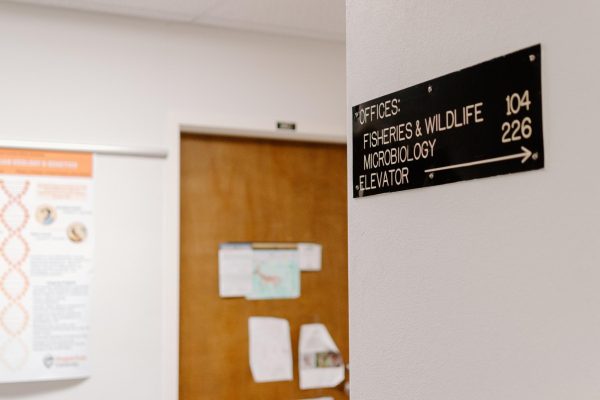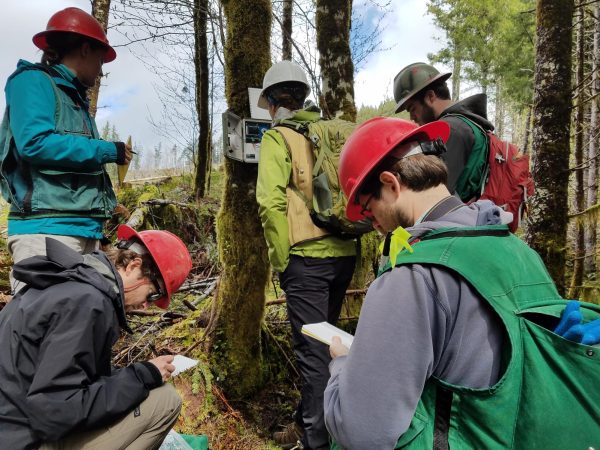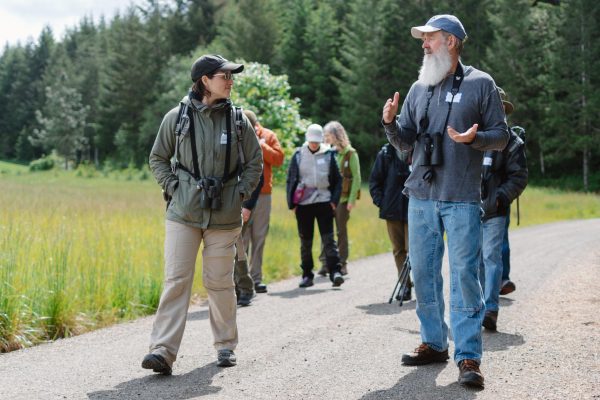Lack of organizational support is causing dissatisfaction for non-profit case workers
April 12, 2023
Worker shortage is not a new problem in Corvallis’ non-profits. However, burnouts and lack of organizational support is an increasing concern among the workers.
A former worker at the Center Against Rape and Domestic Violence, Katie Hart, had seen very high turnover rates among her young co-workers. According to her, it was because of burnout due to lack of support from the management.
When workers reached out to management for help, they would often hear things like, “maybe you’re just burnt out and you should leave, maybe you’re not cut out for this work,” Hart said.
However, Hart did not feel burned out after she quit CARDV in 2019 and joined another non-profit where she was doing child abuse and neglect prevention work with a caseload of 30 clients.
According to Hart, the difference between CARDV and her new job was the presence of support and communication between her co-workers.
Nuria Gammara, the education and outreach manager at CARDV, feels that the value that social service workers add to the community cannot be directly compared to that of a product-oriented company where there is a quantifiable metric such as the number of products manufactured.
“[We could talk] to 100 people, and maybe one of them won’t go back to their abuser – maybe one of them will find a safe space – but we can’t guarantee that,” Gammara said.
Owing to the nature of the job, CARDV operates 24/7 and their client-facing employees, known as advocates, have to cycle their shifts. Despite seeing an increase in the number of advocates to around 20 since the pandemic where there were only about 12 advocates, Gammara feels like there is a need to have more people.
Common issues that workers have come across are dealing with secondary trauma, lack of substantial training, feedback from the management and absence of a community among young workers.
Trauma
Vicarious trauma, also known as secondary trauma – trauma caused by the effect of being exposed to someone else’s trauma— is common in the field of social work.
Gammara emphasized that it is important to be cognizant of one’s breaking point to these kinds of trauma situations.
“I know that I’ve hit it a couple of times. I’ve gotten to that point where it feels like you can’t do it anymore,” Gammara said.
She worked through those times with her therapist and counseling provided to her by CARDV, to overcome the situation.
However, Gammara was aware of the fact that it can be hard for someone who is very busy, such as a parent, to find time for self-care.
Hart, for example, after joining CARDV, stopped seeing her therapist despite having well covered health insurance from CARDV, as the timings did not suit her work schedule.
Trainings
According to Pegge McGuire, the executive director of Community Services Consortium, CSC has on-boarding training and “shadowing,” where the newly hired employees spend time with a more experienced staff member before they begin working independently.
However, when Sarah Goodman-Strong (they/them) joined CSC’s workforce and education department, they felt the time spent shadowing was insufficient.
“We only had two weeks together. With no prior experience, I was just kind of thrown in,” Goodman-Strong said. “I did my best to learn from the person I was replacing. But of course, two weeks is barely any time for someone with no experience.”
Additionally, when leaving CSC, like any other organization, workers transfer their cases to existing and new employees. However, Goodman-Strong said that half of their clients were transferred to an existing case worker and the rest were given to someone who they had not met before on the very last day of their work.
This was further corroborated by an anonymous source, whose identity is withheld as they currently work at CSC. They also mentioned the lack of a formal process to hand over the cases before leaving CSC.
This affects the clients in turn – making them upset with the additional uncertainty of who their case worker would be, on top of their existing situations many of whom are already facing homelessness or joblessness.
According to McGuire, case transfer decisions vary across programs and the managers have flexibility in making them.
Goodman-Strong also observed a high turnover rate while they were working at CSC, due to what they called a “terrible cycle”: because CSC has lost important workers, the organization needs new employees to start immediately, which overwhelms them.
Feedback
Another concern that Goodman-Strong and the anonymous source raised was the lack of performance reviews.
“I never really knew what I was doing right and what I was doing wrong,” Goodman-Strong said. The anonymous source also mentioned that they never received any performance reviews or formal feedback from the management since they have started working for CSC.
McGuire mentioned that after hearing concerns from employees, CSC managers have created more one-on-one group meetings with the current staff recently. Additionally, more managers have been added to teams to ensure there is sufficient capacity to provide feedback.
Community
Recently, there has been a trend of seeing a younger workforce in social services across the United States.
According to Gammara, around 25% of the people who have been working at CARDV have come from other non-profits or domestic violence based organizations, and a majority of the advocates are new to the field. At CSC about one-third of the workers have been there for less than 2 years, according to McGuire.
Goodman-Strong felt that forming groups within the organization, specifically for young professionals to help share the challenges and solutions with each other, was beneficial, and Hart said it was important to have a sense of community.
“Understanding and know(ing) that you’re not alone, other people are going through the exact same thing you are, you can ask them for help, it’s really comforting.” Goodman-Strong said.
Salaries
At both CSC and CARDV, there have been raises in salaries of workers recently, but not all see social work as a long-term option.
Goodman-Strong also does not intend to remain in this field as they feel that the compensation is inadequate.
“If they were paying way more, like two times what we make, I would be happy doing it for years and years,” Goodman-Strong said.
According to McGuire, grant money— one source of funding—that comes to these organizations is sometimes tied to the minimum number of clients that the non-profit has to serve.
“Social service work has historically been undervalued and underpaid,” McGuire said. “It is always a challenge to pay competitive wages in comparison with the for-profit sector. The more we pay staff, the fewer clients we can serve.”
Mental health
When it comes to the mental health of case workers, Goodman-Strong felt that CSC in particular has a good culture of mental health days. McGuire also highlighted the mental health benefits at CSC.
“You can take mental health days and call it a mental health day, and they will respect it and give you the day off,” Goodman-Strong said.
Some workers at CSC have approached the management about these issues and are awaiting for action.
“I think it’s obvious to management what the problem is, and they have been told by other people multiple times, and they’re still not doing anything about it,” the anonymous source said.
The Oregon Department of Human Services declined to comment on this issue and The Daily Barometer was unable to get in touch with CARDV management at the time of publication.

























































































































Dara Roy • Apr 12, 2023 at 10:24 pm
I personally experienced the stress of transition within ccs when I was receiving help to fulfill my housing voucher which had a time limit. It sucked.